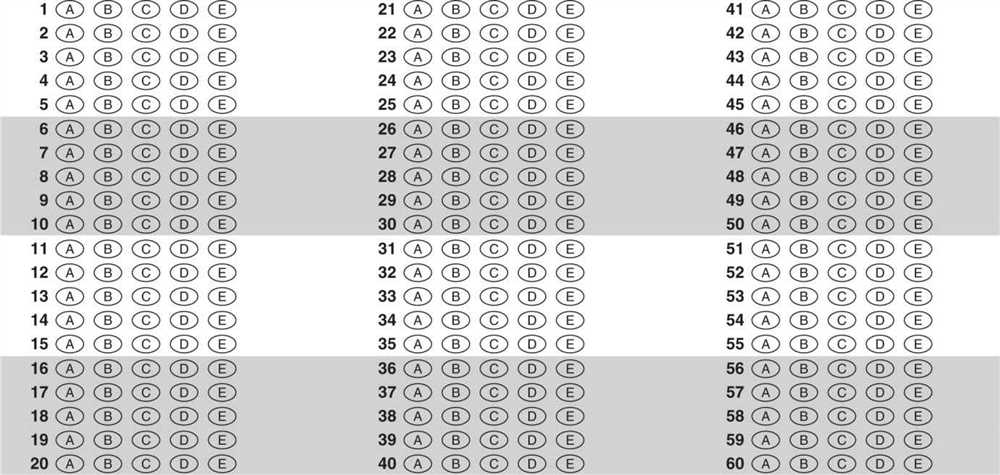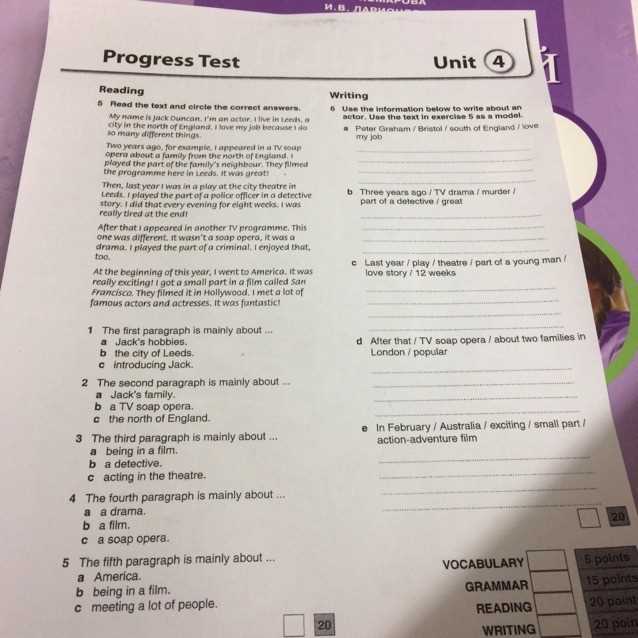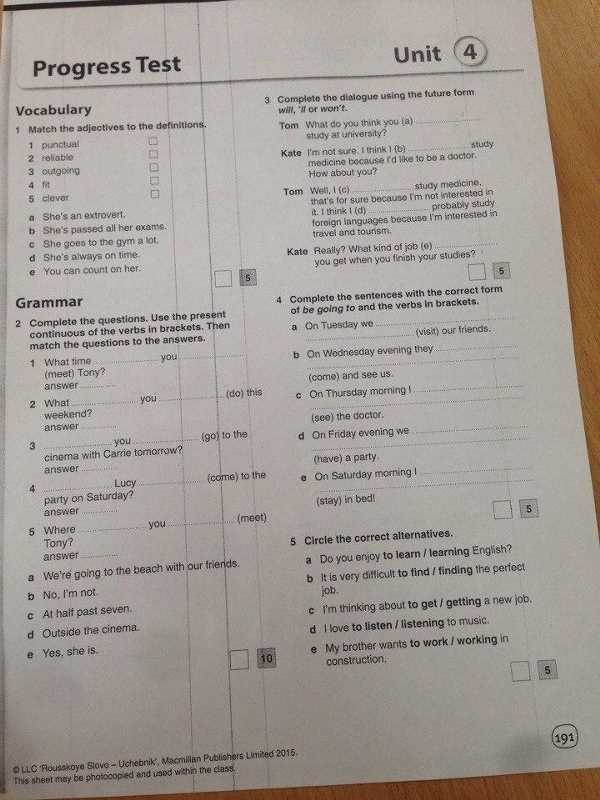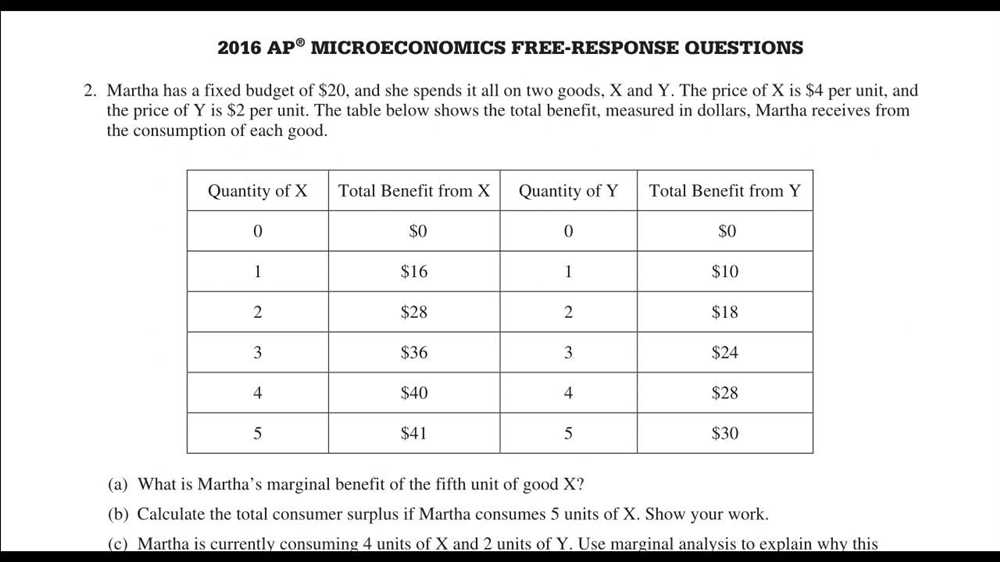
Studying for the AP Microeconomics Unit 4 practice test is essential for success in the exam. This unit focuses on the concepts of antitrust policy, market structures, and labor markets. Understanding these topics will not only help you answer questions on the test but also provide a solid foundation for your future studies in microeconomics.
One of the key topics covered in this unit is antitrust policy. Antitrust policy aims to promote fair competition and prevent monopolistic practices in the market. It is important to grasp the different types of antitrust laws, such as the Sherman Antitrust Act and the Clayton Antitrust Act, and their impact on business behavior and market efficiency.
Another crucial aspect of this unit is the study of market structures. You will explore the characteristics of perfect competition, monopolistic competition, oligopoly, and monopoly. Each market structure has its unique features, such as the number of firms, barriers to entry, and product differentiation. Understanding these distinctions will help you analyze real-world market scenarios and make informed decisions.
Furthermore, labor markets play a significant role in microeconomics. You will learn about the demand for and supply of labor, wage determination, and the impact of labor unions. Understanding these concepts is vital for comprehending the factors that influence employment and wages in various industries.
By devoting time and effort to practicing for the AP Microeconomics Unit 4 test, you will be well-prepared to tackle questions related to antitrust policy, market structures, and labor markets. Remember to review the key concepts, solve practice problems, and seek clarification from your instructor if needed. With determination and a solid understanding of these topics, you can confidently excel in this unit and beyond.
Understanding Unit 4 in AP Microeconomics
In unit 4 of AP Microeconomics, we explore the concept of market structures and how they influence the behavior of firms and consumers. This unit provides valuable insights into how different market structures affect pricing, competition, and economic efficiency. It is crucial for students to thoroughly understand the characteristics of each market structure to analyze real-world scenarios and make informed decisions.
One of the key topics in this unit is perfect competition, where the market consists of many small firms producing identical goods or services. Students will learn about the characteristics of perfectly competitive markets, such as no barriers to entry, price taking behavior, and the absence of market power. They will also understand how firms maximize profits in a perfectly competitive market, considering factors like marginal cost, average total cost, and price elasticity of demand.
Another important market structure covered in this unit is monopoly, which represents a market with a single seller and no close substitutes for its product. Students will delve into the characteristics of monopolies, such as barriers to entry, price-setting behavior, and the presence of market power. They will explore concepts like monopolistic pricing, deadweight loss, and the impact of monopolies on consumer welfare. Additionally, students will examine various government policies and regulations aimed at addressing the negative effects of monopolies and promoting competition.
Key topics covered in Unit 4 AP Microeconomics:
- Perfect competition
- Monopoly
- Monopolistic competition
- Oligopoly
- Economic efficiency
- Market structures and pricing
- Market power and consumer welfare
- Government policies and regulations
Overall, unit 4 in AP Microeconomics is crucial for students to develop a deep understanding of different market structures and their implications. By comprehending the characteristics and behaviors of firms in various market structures, students will be equipped with the analytical tools to evaluate economic situations, make rational decisions, and contribute to the efficient functioning of markets.
Importance of Practice Tests in AP Microeconomics
Practice tests play a crucial role in preparing for the AP Microeconomics exam. They are designed to assess a student’s understanding of the subject matter and help identify areas of weakness that need further review. By taking practice tests, students can become familiar with the format and structure of the actual exam, allowing them to develop effective test-taking strategies.
Practice tests provide a realistic simulation of the AP Microeconomics exam. They consist of multiple-choice questions and free-response questions, which closely resemble the types of questions that students will encounter on the actual exam. This familiarity with the format helps reduce test anxiety and allows students to focus on demonstrating their knowledge and skills.
Practice tests help identify areas for improvement. By analyzing their performance on practice tests, students can identify specific content areas or concepts that they struggle with. This enables them to prioritize their study efforts and allocate more time to the topics that need the most attention. Additionally, practice tests can reveal common mistakes or misconceptions that students may have, allowing them to address these issues before the actual exam.
Practice tests improve time management and pacing. The AP Microeconomics exam is time-limited, and students must be able to complete all the questions within the allotted time. By actively timing themselves while taking practice tests, students can develop a sense of how long they should spend on each question and improve their pacing. This skill is crucial for maximizing their score on the exam.
Practice tests help build confidence and reduce stress. Taking practice tests can increase confidence levels as students become more familiar with the content and format of the exam. This confidence translates into reduced test anxiety and overall better performance on the actual exam. Furthermore, practice tests allow students to experience the pressure of timed exams, helping them develop resilience and adaptability to challenging circumstances.
In summary, practice tests are an essential part of preparing for the AP Microeconomics exam. They provide students with a realistic simulation of the actual exam, help identify areas for improvement, improve time management skills, and build confidence. By incorporating regular practice tests into their study routine, students can increase their chances of success on the AP Microeconomics exam.
Preparing for the Unit 4 AP Microeconomics Test
As you prepare for the Unit 4 AP Microeconomics Test, there are a few key topics and concepts you should focus on. This test will cover the principles of supply and demand, as well as market equilibrium and the effects of government intervention in markets. To succeed on this test, it’s important to review and understand these concepts thoroughly.
Supply and demand is one of the most fundamental concepts in economics. Make sure you understand how changes in supply and demand can affect equilibrium price and quantity in a market. Review the laws of supply and demand, as well as the factors that can shift these curves. Pay special attention to how changes in price elasticity of demand and supply can impact market outcomes.
Market equilibrium is another critical concept to understand. Make sure you can determine equilibrium price and quantity in a market, and understand the forces that drive the market toward equilibrium. Additionally, be familiar with the concept of market disequilibrium and how it can lead to shortages or surpluses.
Government intervention in markets is an important topic that you will encounter on the Unit 4 AP Microeconomics Test. Review different types of government intervention, such as price controls (price ceilings and price floors) and taxes. Understand the economic consequences of these interventions, such as deadweight loss and changes in consumer and producer surplus.
To help you prepare for the test, consider creating flashcards or study guides for the key concepts mentioned above. Practice solving supply and demand problems and analyzing the effects of government intervention in markets. Additionally, review any class notes, textbook chapters, or online resources that cover these topics. By dedicating time to study and review, you can feel confident and well-prepared for the Unit 4 AP Microeconomics Test.
Tips for solving AP microeconomics practice questions

AP microeconomics practice questions can be challenging, but with the right approach, you can improve your performance and achieve a better understanding of the subject. Here are some tips to help you tackle these practice questions effectively:
1. Understand the question
Before diving into solving the question, take a moment to read and understand it carefully. Identify the key terms, relationships, and concepts involved. Pay attention to any specific scenarios or conditions mentioned. This initial step will help you approach the question with clarity and avoid unnecessary mistakes.
2. Review fundamental concepts
Make sure you have a strong grasp of the fundamental concepts and principles of microeconomics. Review topics such as supply and demand, market structures, consumer behavior, and production theory. This will provide you with a solid foundation to apply your knowledge to the practice questions effectively.
3. Apply real-life examples
Microeconomics concepts are not limited to the classroom; they can be observed in everyday life. Utilize real-life examples to understand and apply these concepts. This will help you develop a deeper understanding of how economic principles work in practice and make it easier to solve the practice questions.
4. Practice with different question types
AP microeconomics practice questions come in various formats, including multiple-choice, graph analysis, and calculation-based questions. Practice with different question types to familiarize yourself with their unique requirements. This will enable you to approach questions more confidently and accurately, regardless of their format.
5. Time yourself

During the actual exam, time management is crucial. To prepare for this, time yourself while solving practice questions. Set a timer and aim to complete each question within the allocated time limit. This will help you develop a sense of pacing and ensure that you are able to complete the exam within the given time constraints.
6. Analyze your mistakes
After completing practice questions, take the time to analyze your mistakes. Identify any recurring patterns or areas of weakness. Be aware of any misconceptions or gaps in your understanding. This self-analysis will allow you to focus your future study efforts on the areas that need improvement, ultimately enhancing your performance in the exam.
By following these tips, you can enhance your preparation for AP microeconomics and improve your performance in practice questions. Remember, practice makes perfect, so make sure to practice consistently and actively engage with the material to achieve the best results.
Common topics covered in the unit 4 practice test

The unit 4 practice test for AP Microeconomics covers a range of topics related to market structure and market failures. Students will be assessed on their understanding of concepts such as perfect competition, monopolistic competition, oligopoly, and monopoly.
One topic that may be covered in the test is the characteristics of a perfectly competitive market. Students will be asked to identify the conditions necessary for perfect competition to exist, including a large number of buyers and sellers, homogeneous products, perfect information, and free entry and exit.
- Another topic that may be included is the concept of market failures. Students will need to understand how market failures can occur and the role of government intervention in correcting these failures. This may involve discussing externalities, public goods, and the tragedy of the commons.
- The different types of market structures are also likely to be covered in the test. Students will need to be able to differentiate between perfect competition, monopolistic competition, oligopoly, and monopoly. They should understand the characteristics of each market structure and be able to analyze how these structures impact market outcomes, such as prices and quantity.
- Additionally, students may be tested on their understanding of market power and the implications of market power for consumer welfare. They should be able to explain how market power can lead to inefficiency and higher prices, and understand the potential benefits of competition in promoting consumer welfare.
- Lastly, the unit 4 practice test may assess students’ knowledge of market structure in the real world. This could include analyzing examples of industries and determining the market structure that best describes them. Students should be able to apply the concepts they have learned to real-world scenarios and evaluate the implications of different market structures.
How to approach multiple-choice questions in AP microeconomics
When taking the AP microeconomics exam, it is important to approach multiple-choice questions strategically in order to maximize your chances of a high score. Here are some tips to help you navigate through these types of questions:
1. Read the question stem carefully
Take your time to fully understand the question stem before looking at the answer choices. This will ensure that you have a clear understanding of what is being asked and can eliminate any unnecessary confusion.
2. Identify the correct concept or principle
Once you understand the question stem, identify the key concept or principle being tested. This will help you eliminate any answer choices that do not align with the correct understanding of the topic.
3. Eliminate obviously incorrect answer choices
Look for answer choices that are clearly incorrect or do not make logical sense. By eliminating these options, you increase your chances of selecting the correct answer from the remaining choices.
4. Consider each answer choice individually
Read each answer choice carefully and consider its implications in relation to the question stem. Analyze the possible outcomes and consequences of each choice before making your selection.
5. Use the process of elimination

If you are unsure of the correct answer, use the process of elimination to narrow down your choices. Cross out any answer choices that you know are incorrect or do not align with your understanding of the concept.
By approaching multiple-choice questions in AP microeconomics with a strategic mindset, you can increase your chances of selecting the correct answer. Remember to stay focused, read the question stem carefully, and use the process of elimination to your advantage. Good luck!